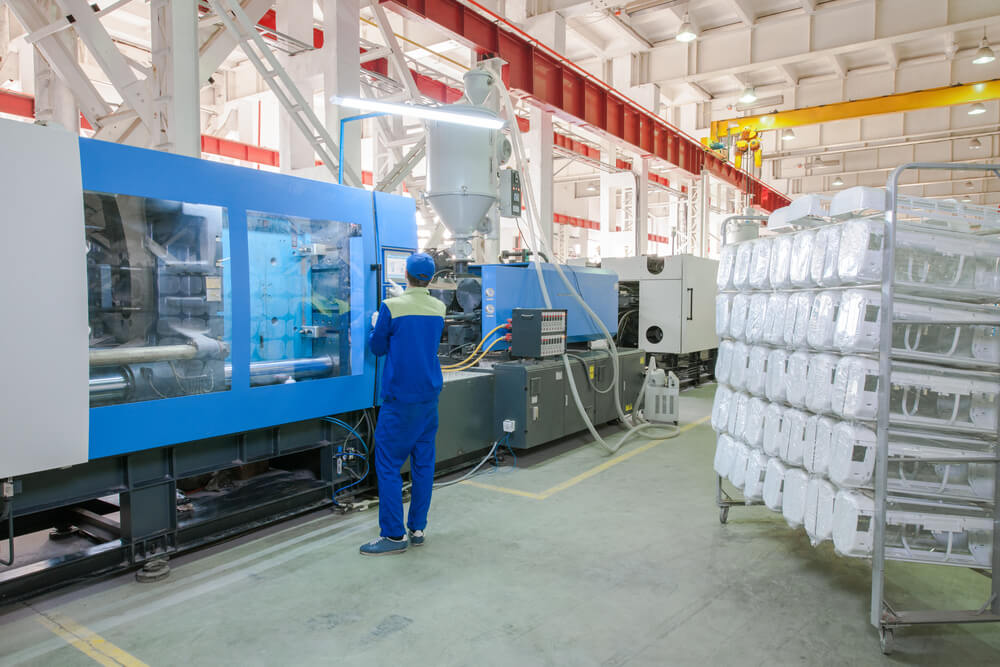Injection molding is a complex manufacturing process with many variables that can impact the success of your production run. Optimizing your injection molding process can help you achieve higher yields with fewer defects. If you're looking to optimize your injection molding process, we have a few tips to get you started.
In this post, we'll be discussing some injection molding optimization tips that will help you boost productivity and thus achieve higher yields. We will also be talking about injection mold testing, and how it can help you troubleshoot common problems that may occur during production. Read on if you're ready to start seeing better results from your injection molding process!
What is Injection Molding?
Injection molding is a manufacturing process for producing parts by injecting molten material into a mold. Injection molding can be performed with a wide variety of materials, including metals, glass, elastomers, and most commonly thermoplastic and thermosetting polymers. It is most typically used in mass-production processes where the same part is created thousands or even millions of times in succession.
Injection Molding Optimization: Why Should You Care?
Optimization of injection molding process parameters is crucial, as it prevents or improves molding defects and thus elevates molding quality. Doing this also helps ensure that injection molded parts meet the required specifications. And by working with an experienced partner in injection molding optimization, manufacturers can ensure that their injection molding process is optimized for their specific needs and ready to produce high-quality parts at a lower cost.
Injection Molding Optimization Tips
Injection molding testing is a crucial part of injection molding optimization because by testing different injection molding parameters, you can identify the ideal settings for your particular application. Here are a few key injection molding optimization tips to keep in mind:
1. Mold Testing and Evaluation
Injection mold testing and evaluation is an essential part of injection molding optimization. By examining the functionality of your mold using your intended material, you can make a range of adjustments to the molding process for better efficiency. Also, by evaluating the molding process itself, you can identify and then troubleshoot any potential issues that could affect the quality of your finished product. There are many different types of injection mold tests, but some of the most common include:
- Flowability testing (or melt flow rate testing) helps determine how easily the material will flow through the mold during the injection.
- Dimensional accuracy testing ensures that the finished parts will meet your specified dimensions.
- Strength testing determines the strength and durability of the finished parts.
- Injection mold testing can be conducted either through physical samples or computer simulations.
- Computer simulations are often used to test complex shapes, structures, or multi-cavity molds.
- Physical tests are performed to verify the results of simulations and to evaluate any potential issues that cannot be accurately modeled on a computer.
2. Master Mold Temperature for Injection Molding Optimization
To make sure that a molded part’s physical properties will meet the performance requirements, proper melt and mold temperatures are essential. If the temperatures are too low, the molded part will be weaker and more brittle than it needs to be. Conversely, if the temperatures are too high, the part will be pliable and more deformable than necessary. Fortunately, modern temperature control technologies make it possible to maintain precise temperatures throughout the entire molding process.
To get the melt and mold temperatures consistently right, have a look at Flying Tiger's Mold Temperature Controller Series. Our solutions include a comprehensive range of high-quality mold temperature controllers designed for efficient operation, ease of use, and reliable monitoring.
How Industry 4.0 Assists in Injection Molding Optimization
Industry 4.0 is the current trend of automation and data exchange across different manufacturing sectors. It includes cyber-physical systems, the Internet of things, cloud computing, and other emerging technologies. Notably, Industry 4.0 creates what is called a "smart factory". Within the industrial sector, this was first introduced in Germany. The vision of a smart factory is to create intelligent networks that can eventually lead to a revolutionary change in production optimization, manufacturing technologies, and factory automation.
1. Better Deployment of Human Capital
In the context of Industry 4.0, humans will remain an essential part of operations systems. Successful implementation of Industry 4.0 will require a highly skilled and adaptable workforce; this will then facilitate more efficient deployment of human capital. For instance, the usage of mobile devices (most commonly tablets) to support workers in maintenance or order picking. Collaborative robots working alongside assembly workers; exoskeletons empowering production and logistics workers; cloud-based or AI-enabled software solutions installed on machines and equipment, are all prominent examples.
2. Enhanced Manufacturing Capabilities
Additionally, higher efficiency can be achieved in processes, resources, and inventories through real-time monitoring and analysis of data collected by sensors embedded in machines and devices. As a result, downtime can be reduced, while productivity and yields are raised.
Injection molding optimization is one area where Industry 4.0 is having a significant impact. In a traditional injection molding process, a human operator configures the parameters and monitors the progress of each cycle. In contrast, once Industry 4.0 is realized in injection molding, the process is usually under an intelligent system’s control. In this case, sensor data are utilized to achieve optimization in production and quality control.

3. Material Coveying Done in A Smarter Way
In the field of plastic manufacturing, a material conveying system is an automated system that moves specified materials between two ends—with the destination generally being a single or multiple discharge point(s). The system can convey different materials to several sets of injection molding equipment, thus elevating the process and cost efficiency.
Furthermore, as we discussed earlier, after undergoing the transformation of Industry 4.0, injection molding becomes more efficient and accurate than the traditional approach. An example of how an injection molding process can tap into Industry 4.0 technologies is the Flying Tiger's Central Material Conveying System.
We integrate individual units into a smart and user-friendly centralized system that is simple to use and runs on a single touch screen. The material conveying method we adopt provides the following advantages:
- Allowing different goods to be linked and collaborated with any 4.0 industrial system
- Operations are straightforward so that you can intuitively monitor all integrated units
- Centralized material storage (or stacking) away from the production line allows for easier management while releasing precious space
Get Ahead of the Curve in Injection Molding Optimization
Injection molding is a process that has been used for decades to manufacture plastic products. Even though the basics of the process have remained largely unchanged, advances in technology have led to new ways of injection molding optimization to achieve higher yields and better-quality products. At Flying Tiger, we are constantly working to stay ahead of the curve and bring our clients the latest advancements in injection molding technology. If you would like to learn more about how you can optimize your injection molding process, contact us today! We would be happy to share our expertise with you and help you achieve the best results possible.
Back







